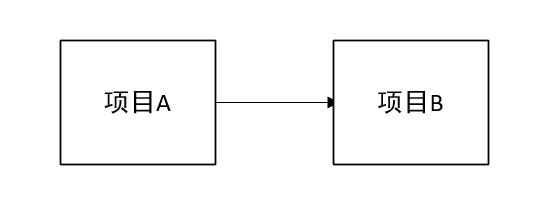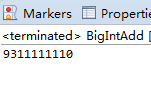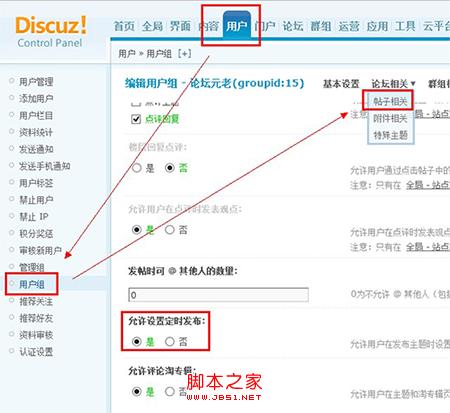数据校验在web应用里是非常重要的功能,尤其是在表单输入中。在这里采用Hibernate-Vapdator进行校验,该方法实现了JSR-303验证框架支持注解风格的验证。
一、导入jar包
若要实现数据校验功能,需要导入必要的jar包,主要包括以下几个:
classmate-1.3.1.jar
hibernate-vapdator-5.4.1.Final.jar
hibernate-vapdator-annotation-processor-5.4.1.Final.jar
hibernate-vapdator-cdi-5.4.1.Final.jar
jboss-logging-3.3.0.Final.jar
vapdation-api-1.1.0.Final.jar
二、常用的校验注解
| 注解 | 功能 |
|---|---|
| @Null | 验证对象是否为 null |
| @NotNull | 验证对象是否不为 null |
| @AssertTrue | 验证 Boolean 对象是否为 true |
| @AssertTrue | 验证 Boolean 对象是否为 false |
| @Max(value) | 验证 Number 和 String 对象是否小于等于指定值 |
| @Min(value) | 验证 Number 和 String 对象是否大于等于指定值 |
| @DecimalMax(value) | 验证注解的元素值小于等于 @DecimalMax 指定的 value 值 |
| @DecimalMin(value) | 验证注解的元素值大于等于 @DecimalMin 指定的 value 值 |
| @Digits(integer,fraction) | 验证字符串是否符合指定格式的数字,integer 指定整数精度,fraction 指定小数精度 |
| @Size(min,max) | 验证对象长度是否在给定的范围内 |
| @Past | 验证 Date 和 Calendar 对象是否在当前时间之前 |
| @Future | 验证 Date 和 Calendar 对象是否在当前时间之后 |
| @Pattern | 验证 String 对象是否符合正则表达式的规则 |
| @NotBlank | 检查字符串是不是 Null,被 Trim 的长度是否大于0,只对字符串,且会去掉前后空格 |
| @URL | 验证是否是合法的 url |
| 验证是否是合法的邮箱 | |
| @CreditCardNumber | 验证是否是合法的信用卡号 |
| @Length(min,max) | 验证字符串的长度必须在指定范围内 |
| @NotEmpty | 检查元素是否为 Null 或 Empty |
| @Range(min,max,message) | 验证属性值必须在合适的范围内 |
三、修改实体类
在类的属性上进行标注,如:
|
1
2
3
4
5
6
7
8
9
10
11
12
13
14
15
|
public class User {
@NotBlank(message = "Username can not be empty")
private String username;
@NotBlank(message = "password can not be blank")
@Length(min = 6, max = 16, message = "The length of the password must be between 6 and 16 bits")
private String password;
@Range(min = 18, max = 60, message = "Age must be between 18 and 60 years old")
private Integer age;
@Pattern(regexp = "^1[3|4|5|7|8][0-9]{9}$", message = "Please enter the correct format of the phone number")
private String phone;
@Email(message = "Please enter a valid email address")
private String email;
// other...
}
|
四、修改相应的处理方法
|
1
2
3
4
5
6
7
8
|
@RequestMapping(value = "/register")
public String register(@Valid @ModelAttribute("user") User user, Errors errors,Model model) {
if(errors.hasErrors()){
return "register";
}
model.addAttribute("user", user);
return "success";
}
|
五、视图输出
校验之后,我们通常需要在表单的输入框后进行文字反馈:
|
1
2
3
4
5
6
7
8
9
10
11
|
<form:form modelAttribute="user" method="post" action="register">
<fieldset>
<legend>register</legend>
<p>
<label>name:</label>
<form:input path="username" />
<form:errors path="username" cssStyle="color:red"/>
</p>
...
</fieldset>
</form:form>
|
然而,有些时候并不推荐直接将错误信息写在注解的message属性里,这样不方便国际化。因此可以做以下几处修改:
1. 新建validatemessages.properties
|
1
2
3
4
5
6
|
username.not.blank = "username cannot be empty..."
password.not.blank = "password cannot be empty"
password.not.length = "password should be in 6-10"
age.not.range = "age should be in 10-70"
phone.not.pattern = "phone should be in format"
email.not.format = "email should be in format"
|
2. 实体类中的注解使用相对引用
|
1
2
3
4
5
6
7
8
9
10
11
12
13
14
15
16
17
18
19
20
|
public class User {
@NotBlank(message = "{username.not.blank}")
private String username;
@NotBlank(message = "{password.not.blank}")
@Length(min = 6, max = 10, message = "{password.not.length}")
private String password;
@Range(min = 10, max = 70, message = "{age.not.range}")
private Integer age;
@Pattern(regexp = "^1[3|4|5|7|8][0-9]{9}$", message = "{phone.not.pattern}")
private String phone;
@Email(message = "{email.not.format}")
private String email;
// other...
}
|
3. 修改配置文件
|
1
2
3
4
5
6
7
8
9
10
11
12
13
14
|
<!-- 默认的注解映射的支持 -->
<mvc:annotation-driven validator="validator" conversion-service="conversion-service" />
<bean id="validator" class="org.springframework.validation.beanvalidation.LocalValidatorFactoryBean">
<property name="providerClass" value="org.hibernate.validator.HibernateValidator"/>
<!--不设置则默认为classpath下的 ValidationMessages.properties -->
<property name="validationMessageSource" ref="validatemessageSource"/>
</bean>
<bean id="conversion-service" class="org.springframework.format.support.FormattingConversionServiceFactoryBean" />
<bean id="validatemessageSource" class="org.springframework.context.support.ReloadableResourceBundleMessageSource">
<property name="basename" value="classpath:validatemessages"/>
<property name="fileEncodings" value="utf-8"/>
<property name="cacheSeconds" value="120"/>
</bean>
|
特别注意:value="classpath:validatemessages",文件名不加后缀!
至此,数据校验的整个过程就结束了。
最后还要特别强调的重点是:
视图中<form:form modelAttribute="contentModel" method="post">的modelAttribute="xxx"后面的名称xxx必须与对应的@Valid @ModelAttribute("xxx") 中的xxx名称一致,否则模型数据和错误信息都绑定不到。
<form:errors path="name"></form:errors>即会显示模型对应属性的错误信息,当path="*"时则显示模型全部属性的错误信息。
以上这篇SpringMVC 数据校验方法(必看篇)就是小编分享给大家的全部内容了,希望能给大家一个参考,也希望大家多多支持快网idc。
相关文章
- 64M VPS建站:怎样优化以提高网站加载速度? 2025-06-10
- 64M VPS建站:是否适合初学者操作和管理? 2025-06-10
- ASP.NET自助建站系统中的用户注册和登录功能定制方法 2025-06-10
- ASP.NET自助建站系统的域名绑定与解析教程 2025-06-10
- 个人服务器网站搭建:如何选择合适的服务器提供商? 2025-06-10
- 2025-07-10 怎样使用阿里云的安全工具进行服务器漏洞扫描和修复?
- 2025-07-10 怎样使用命令行工具优化Linux云服务器的Ping性能?
- 2025-07-10 怎样使用Xshell连接华为云服务器,实现高效远程管理?
- 2025-07-10 怎样利用云服务器D盘搭建稳定、高效的网站托管环境?
- 2025-07-10 怎样使用阿里云的安全组功能来增强服务器防火墙的安全性?
快网idc优惠网
QQ交流群
-
2025-05-27 35
-
2025-05-25 22
-
2025-05-29 93
-
Win10ctrl键失灵怎么办?Win10ctrl键失灵的解决方法
2025-05-27 64 -
2025-05-29 100











